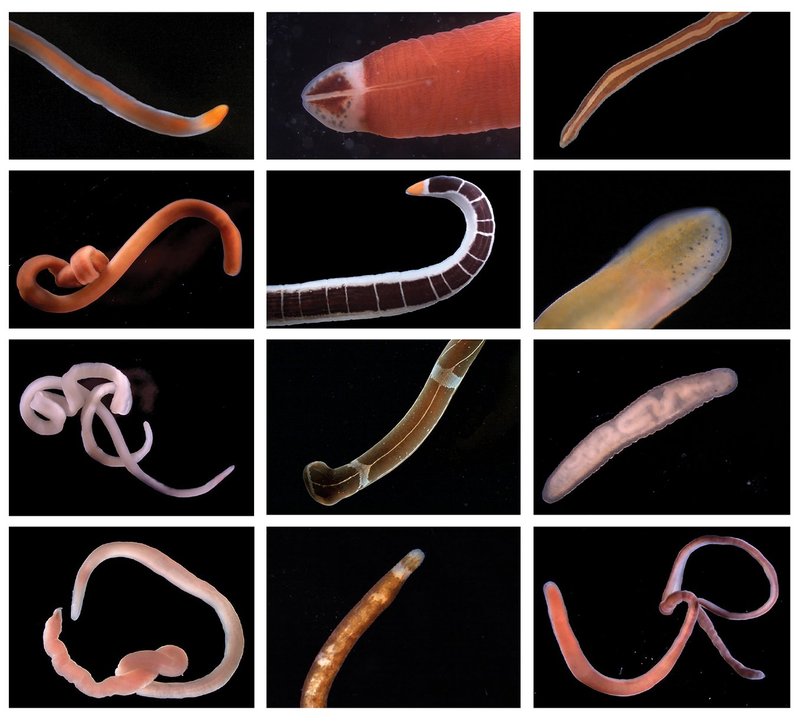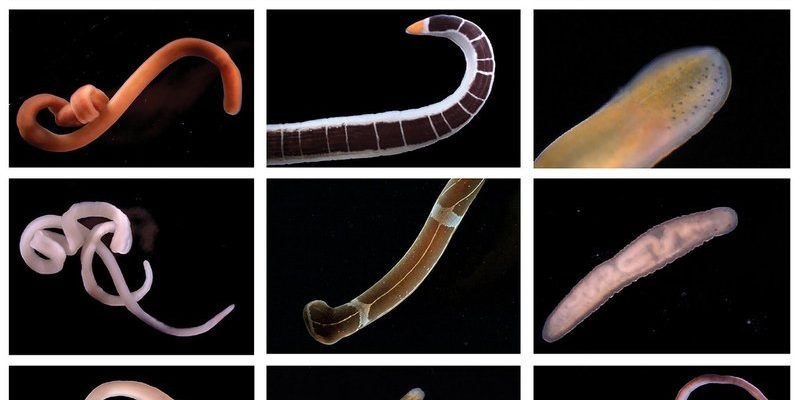
Now, you might be wondering what exactly ribbon worms are and why we should care about them. These worms, belonging to the phylum Nemertea, come in various colors and sizes, and some can grow impressively long, even up to 30 meters! They’re not just weirdly cool; they are also significant players in the marine food web and ecosystem. Let’s dive into their ecological importance and learn how they impact their surroundings.
What Are Ribbon Worms?
Ribbon worms, or nemerteans, are fascinating creatures found mainly in marine environments. They have soft, elongated bodies that can be strikingly beautiful, often displaying vibrant colors. You might spot them hiding under rocks, buried in sand, or sometimes floating in the water. **But what makes them unique?**
One standout feature of ribbon worms is their **proboscis**, a special appendage they use to capture prey. Think of it like a supercharged tongue that can shoot out to snag unsuspecting animals, from tiny crustaceans to even smaller fish. This ability makes them effective predators, helping control populations of other marine organisms.
Despite their predatory nature, ribbon worms are also prey themselves. Many fish and other marine animals rely on them for food, creating connections within the ecosystem. They might be small, but they’re mighty in the complex web of life beneath the waves.
The Role of Ribbon Worms in the Marine Food Web
Ribbon worms play a crucial role in the marine food web. As predators, they help maintain the balance of various species, controlling populations of smaller marine life. This keeps the ecosystem healthy and ensures that no single species dominates the environment.
But here’s the thing: when ribbon worms feast on smaller organisms, they also contribute to nutrient cycling in the ocean. Their digestion breaks down matter that gets recycled back into the ecosystem, enriching the sediments and allowing other plants and animals to thrive. This process is vital for the health of marine environments.
You might compare the role of ribbon worms to that of a gardener who prunes plants to promote growth. By keeping certain populations in check and recycling nutrients, they help ensure that the entire underwater garden flourishes.
Ribbon Worms and Habitat Health
Healthy habitats are essential for the survival of marine life, and ribbon worms play their part in this big puzzle. They commonly inhabit soft sediments on the seafloor, where they burrow and contribute to the overall structure of these environments. When these worms move through the sediment, they help aerate it, promoting oxygen flow that is essential for other living organisms.
Healthy sediments support diverse life forms. Without creatures like ribbon worms performing their roles, we might see a decline in biodiversity over time. Just imagine a garden choked with weeds; without maintenance, the vibrant plants can’t flourish. Ribbon worms help ensure that the marine “garden” remains diverse and vibrant.
Moreover, their presence can indicate the health of their environment. A thriving population of ribbon worms often means good water quality and a well-balanced ecosystem. On the flip side, a significant decline can signal issues within the habitat, prompting researchers to investigate potential environmental problems.
How Ribbon Worms Contribute to Carbon Cycling
You might be surprised to learn that ribbon worms are also important players in carbon cycling. The oceans act as a vast carbon sink, absorbing carbon dioxide from the atmosphere. As ribbon worms consume organic matter and then excrete waste, they help release nutrients back into the sediment, which can assist in capturing and storing carbon.
This process is vital for combating climate change. The more efficient carbon cycling is in our oceans, the better chance we have at mitigating some of the effects of rising carbon levels. Think of ribbon worms as tiny warriors in the battle against climate change, working silently and tirelessly beneath the waves.
By supporting healthy sediment, healthy worm populations directly contribute to the ocean’s ability to sequester carbon, demonstrating how interconnected every life form is in maintaining ecological balance.
Conservation Challenges for Ribbon Worms
While ribbon worms are essential to their ecosystems, they face several challenges that threaten their populations. Habitat destruction from human activities, such as coastal development, pollution, and climate change, can lead to declines in their numbers. It’s like taking away the tools a gardener needs to keep a garden thriving. Without their habitats, ribbon worms struggle to survive.
Pollution, especially from agricultural runoff, can degrade water quality and lead to declines in marine life. Ribbon worms are sensitive to changes in their environment, and any negative impact can ripple through the ecosystems they support.
To help protect ribbon worms, we need to focus on habitat conservation efforts. Simple actions like reducing plastic use, cleaning up coastal areas, and supporting sustainable fishing practices can make a big difference. When we protect the environments ribbon worms call home, we’re also helping countless other marine organisms.
Ribbon worms might not be the flashiest creatures in the ocean, but their ecological importance is undeniable. From their role in the marine food web to their contributions to habitat health and carbon cycling, these fascinating worms are tiny powerhouses doing essential work beneath the waves.
As we learn more about the interconnectedness of ecosystems, it becomes clear that even the smallest creatures can pack a punch. By supporting conservation efforts and being mindful of our impact on marine environments, we can help protect these hidden heroes and the delicate balance they uphold.
So, the next time you think about ocean life, remember the ribbon worms quietly contributing to a thriving underwater world. They may be unsung, but their work is anything but insignificant.

